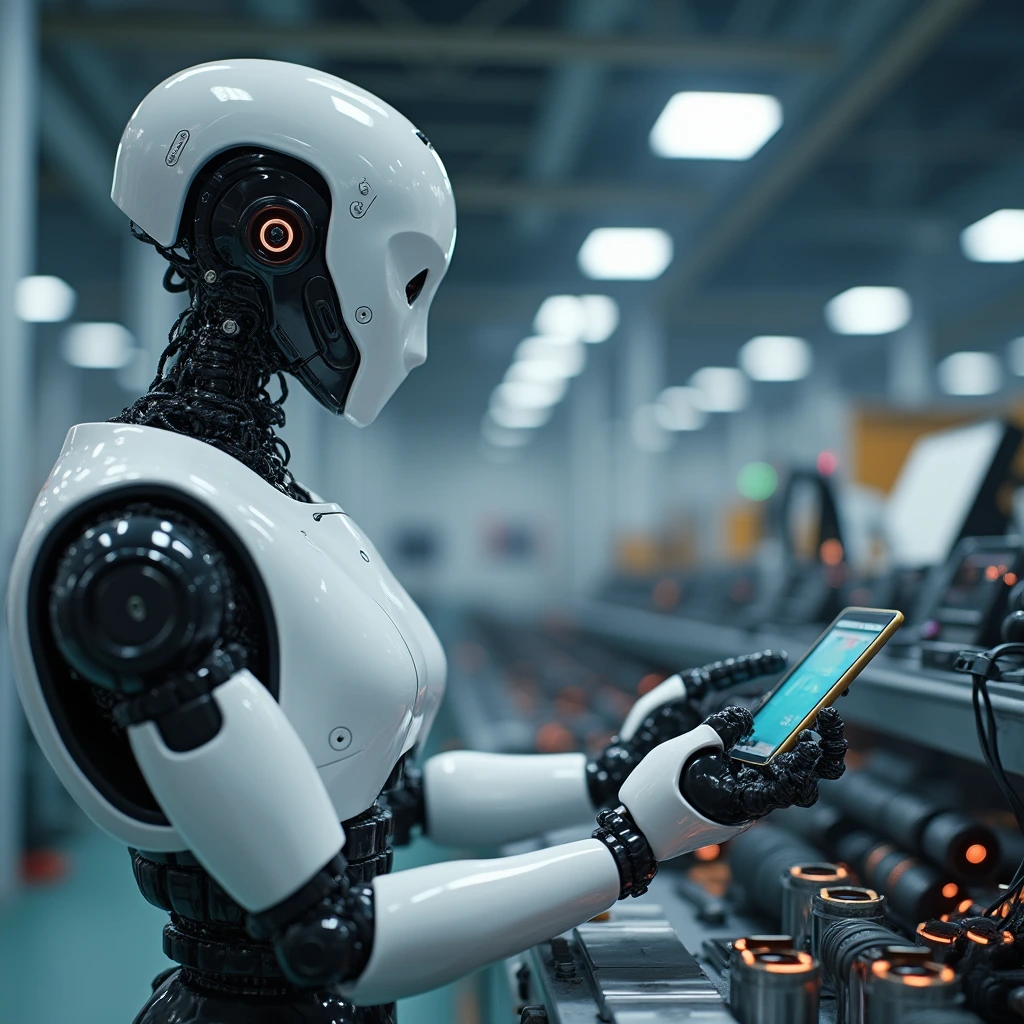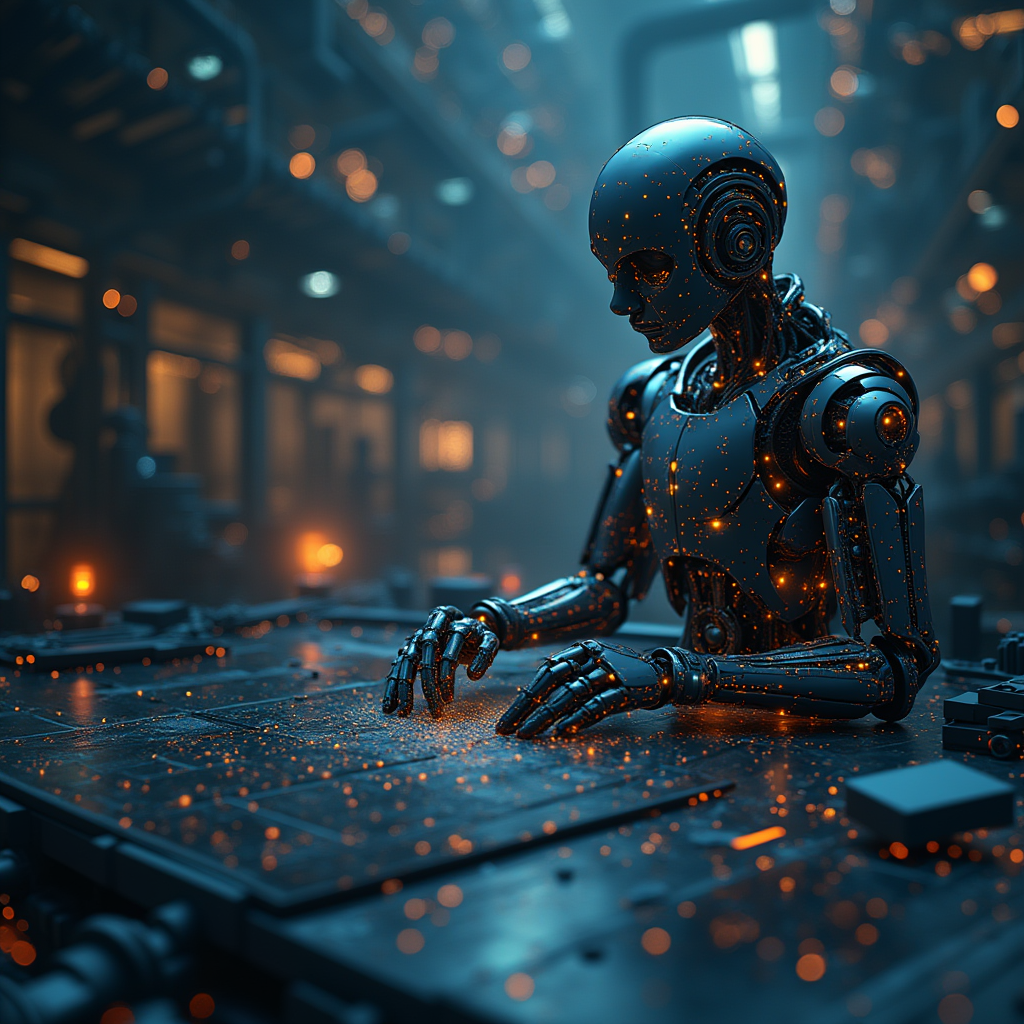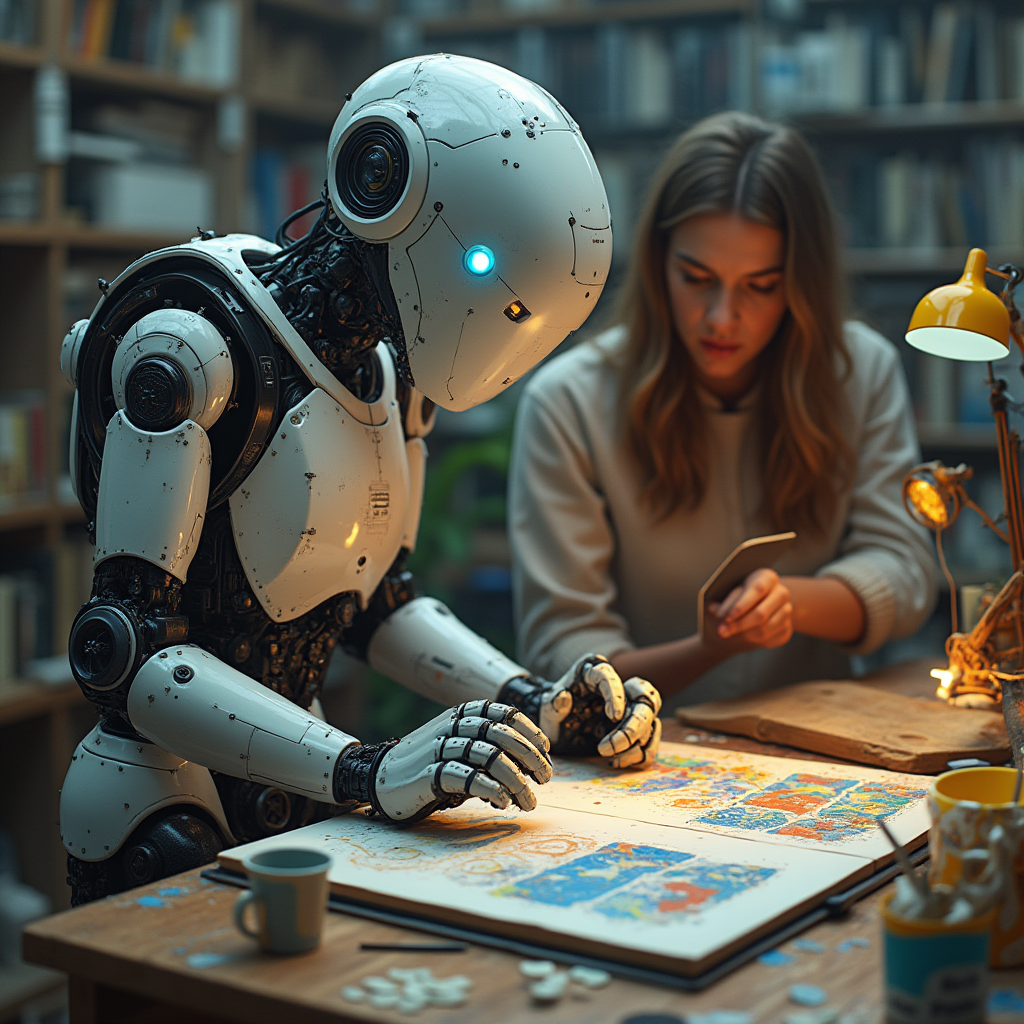Unlocking Creativity: An Introduction to Generative AI and Its Impact
- 1 min read
This blog provides an in-depth look at generative AI, explaining what it is, how it works, and why it’s becoming increasingly important in various industries. We explore the technology’s ability to create original content like text, images, music, and more, and how it’s transforming fields such as content creation, healthcare, and scientific research. The blog also discusses the potential of generative AI to drive innovation, automate creative tasks, and solve complex problems. Finally, we take a glimpse into the future of generative AI, considering its impact on jobs, industries, and the opportunities it creates for growth and collaboration.

What is Generative AI?
Generative AI is a type of artificial intelligence that can create new content, such as text, images, music, and even videos, based on patterns it learns from existing data. Unlike traditional AI, which simply processes or classifies information, generative AI has the ability to generate something original that resembles the input it has been trained on. For instance, a generative AI can write a poem after reading many poems, or it can paint a picture after studying various art styles.
This type of AI uses advanced techniques like deep learning and neural networks to understand the structure of the data it analyzes, enabling it to create new, unique pieces of content that were not directly copied from any specific source. But there are other AI based tools that can check mentioned authenticity.

Important Due to Transformation
Generative AI is transforming almost every traditional business model by providing robust and tailored tools to reduce time and enhance productivity. Thus, new ideas that were never possible started to deserve a change. Since it is automating tasks, this not only boosts productivity but also sparks innovation, as it opens up new possibilities for artists, writers, and creators to explore fresh ideas and concepts.

It's importance also about new ideas that we would discover in a century. I am talking about a formula for a disease or a chemical compound etc.

How Generative AI Works
The Basics of Machine Learning
At the core of generative AI is a field called machine learning, which is a way for computers to learn from data, just like we learn from experience. Instead of being explicitly programmed to do a task, machine learning allows AI systems to recognize patterns in data and use them to make predictions or generate new information. In simpler terms, it's like teaching a computer to play a game by showing it lots of examples of how the game is played, rather than giving it a step-by-step rulebook.
Training a Model: Learning from Examples
Training a generative AI model is similar to how we learn through practice. First, the AI is fed a huge amount of data—be it pictures, text, or music. For example, if you want to train an AI to generate poems, you'd show it thousands of poems so it can learn the structure, rhythm, and themes that make up a good poem. The more examples the AI sees, the better it gets at understanding the patterns and nuances within the data. This "training" phase is crucial because it’s how the AI starts to understand what it needs to do to create something new.
Once trained, the AI can generate new content based on what it has learned. For instance, after seeing countless examples of paintings, the AI might be able to create its own unique artwork, mimicking the styles it has studied.
The Role of Data in AI Creation
Data is the fuel that powers generative AI. The AI needs a large and diverse set of data to learn from in order to generate accurate and creative outputs. This data acts as a reference library, showing the AI the different ways things can be structured, combined, and expressed. For instance, if the data is images, it helps the AI understand color schemes, shapes, and patterns; if the data is text, it teaches the AI about grammar, tone, and vocabulary.
The quality and quantity of the data play a huge role in how effective the AI becomes. The more varied and detailed the data, the more likely the AI will produce interesting, innovative, and accurate results. However, if the data is biased or incomplete, the AI's creations can reflect those limitations, which is why choosing the right data is essential for training a fair and creative generative model.
Types of Generative AI
Generative AI can be used to create many types of content across various fields. Here’s a look at some of the most common types of generative AI:
Text Generation (e.g., Stories, Articles) Text generation is one of the most popular uses of generative AI. It involves creating written content, such as stories, articles, poetry, or even code, based on a given prompt or set of instructions. AI models like GPT (Generative Pretrained Transformer) are trained on vast amounts of text from books, websites, and other sources, enabling them to generate new, human-like text. Writers and marketers use this type of AI to quickly draft content, generate ideas, or even assist with creative writing. While AI-generated text can be impressively coherent, it still requires human oversight to ensure it’s contextually relevant and free from errors.
Image and Art Generation
Generative AI is also highly effective at creating visual content. By learning from large datasets of images, AI models can generate new, realistic pictures or artworks based on specific styles, themes, or prompts. For example, artists can use AI to create abstract art, design realistic landscapes, or generate photorealistic images that look like they were taken by a camera. Some tools allow users to input a description (like "a cat playing a guitar") and generate an image that matches that vision. This has opened new creative possibilities in graphic design, advertising, and even fashion design.
Music and Sound Creation
Generative AI can compose music by learning from existing songs in different genres. It can create original melodies, harmonies, and even lyrics by analyzing patterns in musical compositions. Musicians and producers use generative AI to assist with songwriting, create background scores, or even produce fully realized tracks. For example, AI can be trained on classical music to generate new compositions that sound similar to famous composers like Beethoven, or it can create new, futuristic sounds for film and video games. This ability has made AI a helpful tool for music production, especially when looking for fresh, innovative ideas.
Video Generation
While still developing, AI-driven video generation is one of the most exciting frontiers in generative AI. AI can now create realistic videos or animations based on text prompts or existing video clips. This can be used in areas like marketing, entertainment, and education, where AI generates video content without needing a film crew or complex production. For example, AI can animate characters, generate realistic background scenes, or even create deepfake-style videos that are almost indistinguishable from real footage. While the technology is still evolving, video generation has the potential to transform industries by making video production faster, cheaper, and more accessible to creators of all skill levels.
Each of these areas opens up unique possibilities for creators and industries, offering new tools to enhance creativity and efficiency. As technology continues to improve, we can expect generative AI to revolutionize the way we produce and consume content.

The Future of Generative AI
What’s Next for AI?
The future of generative AI holds exciting advancements in creativity and problem-solving. As AI models become more sophisticated, they will generate even more realistic and diverse content, from interactive virtual worlds to personalized experiences. We can expect AI to play a larger role in areas like healthcare, design, and education, automating tasks and driving innovation across industries.
Impact on Jobs and Industries
Generative AI will reshape job markets by automating repetitive tasks and enhancing creative processes. While some jobs may be displaced, new opportunities will emerge in fields like AI development, data science, and content creation. Industries like marketing, entertainment, and tech will see significant growth as AI tools improve productivity and open new avenues for innovation.
Opportunities for Growth and Collaboration
As AI continues to evolve, there will be vast opportunities for collaboration between humans and machines. Generative AI can help businesses scale faster, empower creators, and provide new insights into complex challenges. Embracing AI in a collaborative way will lead to faster problem-solving, more personalized products, and an overall boost to global innovation.

Turkish Tech Renaissance: The Remarkable Growth of the IT Industry
Turkey's IT industry is rapidly growing, driven by its strategic geographic location, a young and educated workforce, and strong government support. The country's thriving startup ecosystem, emphasis on digital transformation, and increasing IT exports are positioning Turkey as a significant player in the global technology landscape. This growth trajectory highlights Turkey's potential and ambition in shaping the future of technology both domestically and internationally.

TURKIYE: The Rising Star of IT Outsourcing
Turkey is quickly becoming a key player in the IT outsourcing industry, thanks to its strategic location, skilled workforce, and cost-effective solutions. Positioned between Europe and Asia, Turkey offers businesses access to top-tier IT talent at competitive prices, with minimal language and cultural barriers. The country's commitment to data protection and innovation further enhances its appeal as a reliable and cutting-edge IT outsourcing partner.